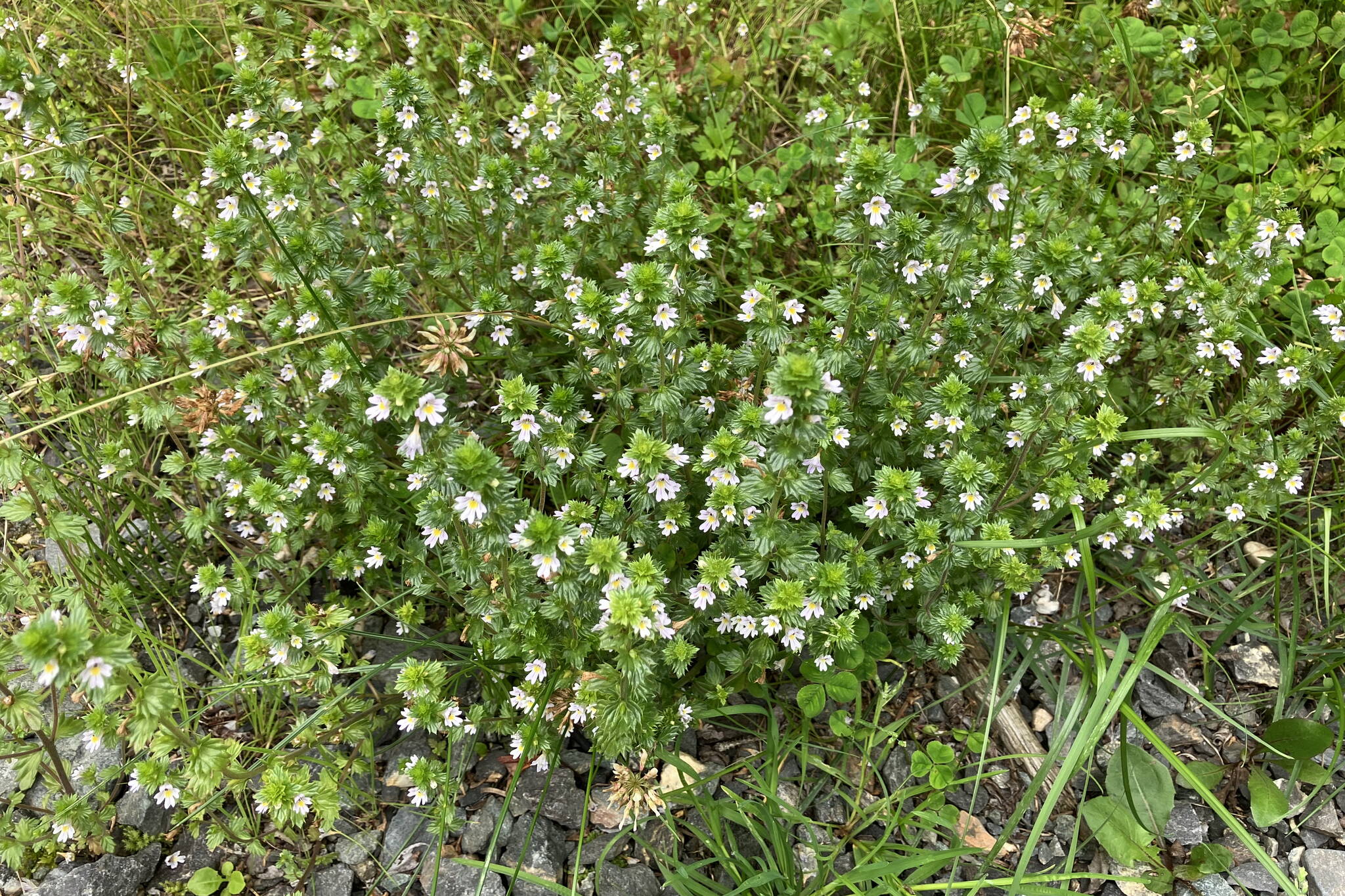When you take a walk, what do you see? I mean really SEE. Sometimes I don’t really see (to notice) anything — I am talking with a friend, or fretting, or problem-solving, or daydreaming, or whatever. For some folks, noticing is only for scenery — big things such as snow on distant mountain peaks, a rainbow over a cove, or a brilliant stand of fireweed. But I like to notice a variety of things, big and small.
Sometimes I make it a point to look at small things that often get overlooked. I’m thinking here of little plants, but the same could be done for insects or fungi. For now, to celebrate these little ones, just consider one of these small flowering plants, one that it is easy to walk right past. But it captured my fancy and I decided to look more closely.
Eyebright (Euphrasia arctica) is a common little trailside plant, usually only a few inches tall, rarely reaching as high as 10 or 12 inches. A vertical stem bears green, toothy leaves and a series of small white flowers. The stem grows upward, seldom branching, producing a few flowers in the leaf axils at intervals. The oldest flowers are lower on the stem and often produce seeds while new flowers appear at the top of the stem. The seeds are ridged, tapered ovals, about a millimeter long, with no special dispersal devices.
The flowers have purplish stripes inside the upper petal and a yellow blotch on the lower petal. Inside the flower, I could see some dark lumps with whitish attachments, but I couldn’t make sense of all that. So, since I was headed out to the Arboretum anyway, with another query, I took a specimen or two along, in hopes that someone on the staff could clarify things for me. Indeed there was! Poking carefully into a flower, a young staffer determined that the dark lumps were anthers (bearing pollen) hanging down from curved white filaments, comprising the stamens. (So I had been seeing the underside of anthers; usually the filaments hold the anthers up). But where were the female parts? None was apparent in several flowers. But by looking at a very new flower at the top of the stem, the staffer found a protruding pistil, holding the receptive stigma well above the anthers. So we learned that the sexual parts appear to be quite separated in space and also might be functional at different times, but we don’t know when pollen is presented.
The floral structure, with an attractive array of petals and a spatial separation of anthers and stigma, suggests that this plant does not self-pollinate but outcrosses with others, depending on some visiting insects. However, I’ve never noticed many insects attending these flowers, only a few tiny flies. Perhaps I should look more closely!
The local species of eyebright is widely distributed across northern North America and Europe. The genus is cosmopolitan and contains many species reported to be annual rather than perennial. All are hemiparasites, getting some of their nutrients from host plants via specialized root-to-root connections and also making some of their own carbohydrates by photosynthesis. They are generalist parasites, able to connect with many different kinds of host plants; of course, some hosts are better than others, supporting better growth of the parasite.
There are still more things to learn about eyebrights but I find it very satisfying to have become better acquainted with them.
Thanks to Khalil English at the Jensen-Olson Arboretum for leading the floral exploration!
• Mary F. Willson is a retired professor of ecology. “On The Trails” appears every Wednesday in the Juneau Empire.

